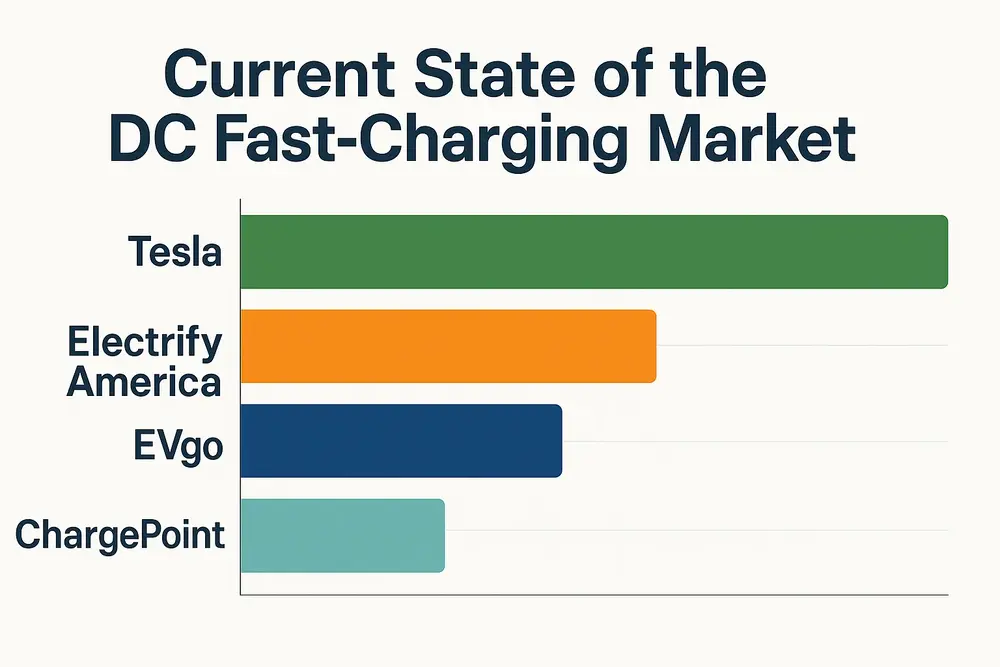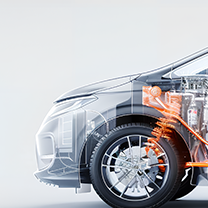
Products
Fast, Reliable, Everywhere

Solutions
Efficient, Innovative EV Charging Solutions.
As electric vehicle (EV) adoption accelerates globally, the demand for rapid and reliable charging solutions has surged. In 2022 alone, around 330,000 fast chargers were added worldwide, bringing the total to approximately 860,000. That year, DC fast chargers accounted for over 72% of global charging infrastructure revenue—making this segment a dominant force in the market.

For businesses aiming to invest in EV charging, staying informed about market dynamics, innovation trends, and infrastructure challenges is essential. This article outlines key aspects shaping the current DC fast charging landscape.
By the end of 2022, there were 2.7 million public EV charging points globally—a 55% increase from 2021, driven by robust infrastructure rollouts in regions like Europe, the US, and China. The total market for EV charging infrastructure was valued at USD 19.67 billion in 2022 and is forecasted to grow at a 25.5% CAGR through 2030.
Within this space, DC fast charging is the most lucrative segment. The global count of fast chargers jumped by 330,000 units in 2022, with China alone accounting for 760,000.
Europe: More than 70,000 DC fast chargers were active by late 2022, led by Germany (12,000), France (9,700), and Norway (9,000). The EU continues expanding this network through the AFIR regulation and over EUR 1.5 billion in funding.
United States: The U.S. added 6,300 DC fast chargers in 2022—three-quarters of which were Tesla Superchargers—totaling 28,000 by year’s end. With the NEVI program and USD 885 million allocated for 2023, further growth is expected across 122,000 km of roads.
United Kingdom: As of 2022, the UK had approximately 7,000 fast charging points and is investing £950 million in rapid charging infrastructure along motorways by 2035.
Norway: A leader in EV adoption, Norway added 1,500 DC chargers in 2022 alone. While initial infrastructure was government-backed, most of the rollout is now commercially driven.
1. Speed and Capacity Improvements The demand for quicker charging is driving innovation. Once dominated by 50 kW units, new DC fast chargers now offer 150–300 kW or more. The average EV can be charged to a usable level in 17–52 minutes. Companies like Fastned are targeting 80% charges in under 10 minutes.
2. Collaborative Deployment Models Fuel stations, hotels, parking garages, and restaurants are ideal locations for fast chargers. Strategic partnerships between charge point operators (CPOs), local businesses, and retail networks are helping to reduce costs and expand service reach.
3. Smart Charging Technologies Smart charging optimizes electricity use, reduces grid impact, and ensures efficient power distribution. Key features include load balancing, vehicle-to-grid (V2G) interaction, and simultaneous charging support. Regulatory frameworks are evolving to support smart, connected charging.
4. Integration with Renewable Energy While most charging currently relies on conventional grids, the push for greener energy is introducing microgrid models. These systems integrate solar, wind, or battery storage with fast chargers, improving resilience and sustainability despite current scalability challenges.
1. Grid Connection Complexities Connecting new fast chargers to the grid remains a logistical and regulatory hurdle. Varying rules across jurisdictions make it difficult for operators to forecast costs and installation timelines. Standardized permitting and coordination with utilities are needed to accelerate deployment.
2. Interoperability and Standards With global EV growth comes a need for seamless, cross-network charging. Governments are implementing regulations to improve price transparency, payment systems, digital connectivity, and safety across charger types and manufacturers.
Stakeholders—including regulators, grid operators, manufacturers, and CPOs—must work together to align interests and meet growing demand efficiently.
DC fast charging is a cornerstone of the EV revolution. As infrastructure scales, so do the expectations for faster, smarter, and greener charging experiences. For businesses, the opportunity lies not only in selling electricity but in building strategic ecosystems that cater to evolving user needs.
Staying informed and investing wisely in this sector can yield strong returns and contribute to a more sustainable transportation future.
